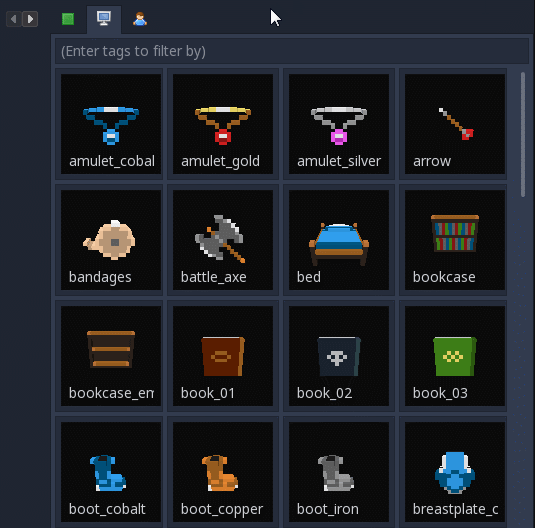Hello again, everyone! I’ve been making great progress on the upgrade to Godot 3.0 and seem to be gaining more momentum as I get some of the general groundwork out of the way. Continue reading below for some details on my progress and a couple of other updates!
Progress on Godot 3.0 Update
Recently, I’ve been mostly focusing on polishing, tweaking, and testing the existing functionality of the “new and improved” RPG in a Box, along with the addition of a few minor usability improvements here and there. I also finally got around to implementing a cursor into the new Voxel Editor as shown below. This one behaves similarly to MagicaVoxel’s and should make it easy to see where changes will be made.

A brand new feature that will be in v0.5 is the ability to drag-and-drop MagicaVoxel .vox files into the application to import them. The original method will be available as well, but this should make the process quicker and easier since you don’t have to create a new model first or browse to the folder from within the application. The dialog will let you decide which resource type to import the files as (i.e. tile, object, or character).

I also revisited and finished up the “palette matching” tool that I started implementing a while back. This tool allows you to apply a palette (either a built-in one or your own) to a model, which will be especially useful if you’d like to retrofit your existing models to a color palette or even switch from one to another. The popup dialog lets you override any of the automatic color matches since there will usually be cases where a different color may be more suitable. In the example below, I am applying the Commodore 64 palette to one of the Tiny Dungeon models.

I reworked the resource filtering functionality to be a bit more flexible than the current version. You can now type one or more tags directly into the filter box. The resource grid will be filtered to only show the resources having a tag that starts with one of those that are entered. Resources that are marked as favorites now also show a star icon in the top left corner of their box and are highlighted in green text in the Game Explorer.

It’s exciting that I’m getting very close to having the first official build of the v0.5 release available! This build will only include the Voxel Editor and the general interface for creating a game project and managing models. I’ll be releasing these early/incomplete builds of v0.5 to Alpha Access owners, then once it becomes more complete I’ll replace the current demo version of RPG in a Box with this updated version that is based on Godot 3.0.
Other Updates
Another demo game idea recently popped into my head. I’ve always been a fan of ASCII, ANSI, and PETSCII art, so I thought it would be cool to create some PETSCII-style assets using RPG in a Box. So far, I’ve tried sticking with 8×8 tiles (and objects made of one or more 8×8 shapes) from the character set, as well as Commodore 64 colors. I think it’s turning out pretty neat so far! I’m planning to eventually set up an Itch.io bundle page to make these sorts of tiny example games available for the community to play and experience.

I don’t recall if I had mentioned this previously, but the new documentation wiki is now up-to-date and should be fairly comprehensive in regards to both editor and in-game functionality, so that is a relief. Of course, I’ll need to be diligent going forward and keep it that way!
While on the subject of the wiki, a (somewhat) new tutorial is available that walks through adding an item container to your map. This was originally created for the tutorials section on IndieDB, but has been polished and updated and now resides on the official wiki with the other tutorials here: Adding an Item Container to a Map.

If you’d like to find out more about RPG in a Box or try out the free demo version, check out my Itch.io page here.
My next update will be in 2018, so I hope everyone has a Merry Christmas and a Happy New Year! 🙂









